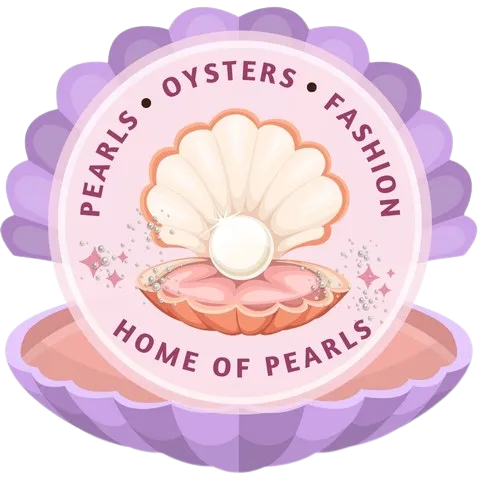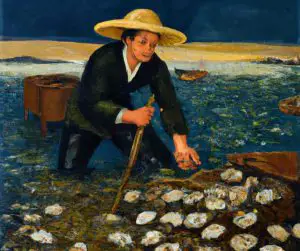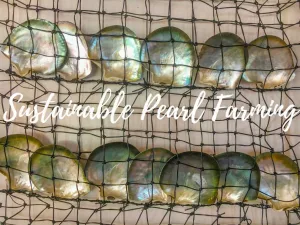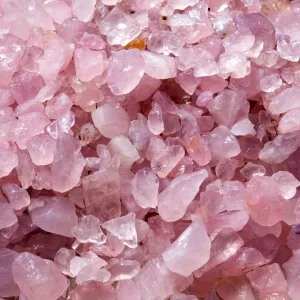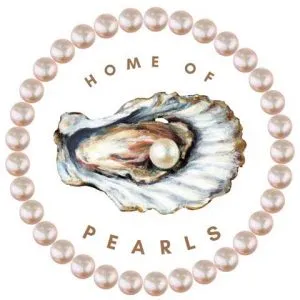The Akoya pearl is one of several types of pearls used in jewelry. So, what are Akoya pearls? Akoya pearls come from the Akoya oyster.
It is the most popular type of saltwater cultured pearl and is considered the classic pearl. Most people think of Akoya pearls when picturing a traditional pearl necklace or set of pearl earrings.
Table of Contents
- Where Do Akoya Pearls Come From?
- How Are Akoya Pearls Formed?
- Akoya Pearl Shape and Size
- Akoya Pearl Color Range and Luster
- Average Akoya Pearl Prices
- Conclusion
Where Do Akoya Pearls Come From?
Pearl farmers harvest Akoya pearls from the Akoya oyster, which has the scientific name Pinctada Fucata.
Pearl farms are typically set up in the cool, shallow bays off the coast of Japan. The cold saltwater offers the perfect environment for the oysters to grow large, beautiful pearls.
As the pearls are harvested in seawater, Akoya pearls are seawater pearls instead of freshwater pearls.
Japan is considered the pearl capital due to the abundance of Akoya pearls farmed in the area. However, some Akoya pearls come from other regions, including China, Vietnam, Australia, and Thailand.
How Are Akoya Pearls Formed?
Akoya oysters were the first oysters to be cultivated for pearl production. Cultured pearls make up over 99% of the real pearls sold yearly.
An overwhelming majority of those pearls are Akoya pearls. Akoya pearls are real pearls. They are considered cultured pearls, as they are prepared with human assistance, as opposed to natural pearls.
Pearl farmers add an irritant to the inside of the oyster’s soft tissue. The irritant, such as the nucleus of a shell bead, forces the oyster’s natural defense mechanism to start working. The oyster produces a secretion to fight the irritant. The secretion gradually develops into a pearl.
The Akoya oysters measure about three to five inches, making them among the smaller pearl-producing oysters.
Farmers harvest the pearls from the oysters between December and March. Harvesting involves removing the oyster from the water and checking the pearl. It can take one to two years for a pearl to grow to its optimal size.
Akoya Pearl Shape and Size
Akoya pearls are known for their perfectly round shape. A portion of the pearls produced on Akoya farms ends up with irregular shapes, resulting in baroque pearls. However, Akoya pearls are perfectly spherical.
Akoya pearls are among the smallest cultured pearls. Common sizes range from 6 mm to 9.5 mm. Pearl necklaces and pearl stud earrings often include pearls measuring 7 to 8 mm in size.
Akoya producers can harvest the pearls at different stages to obtain different sizes. The smallest Akoya pearls measure just 1 mm.
The largest Akoya pearls measure up to 10 mm and may take up to 2 years for an oyster to produce.
Akoya Pearl Color Range and Luster
Akoya pearls are available in multiple colors. However, white is the traditional choice. Most Akoya pearls are white with an overtone of cream, silver, blue, gold, or rose.
White with rose overtones is the most common color for Akoya pearls. Pearls with a rose overtone may appear pastel pink in the right light.
You can also find Akoya pearls in a wide range of artificial colors. Manufacturers can create Akoya pearls in black and other colors using a color-treatment method, such as using a dye.

Akoya pearls are also believed to possess the highest quality luster compared to other types of pearls. Luster is the quality of the shine when light reflects off the surface and inner layers of a pearl. The exterior of the pearl is often shiny and reflective.
The reflective property of the pearl is often comparable to a metal ball bearing, which is also how the luster is often described. Akoya pearls may also be described as having mirror-sharp luster.
Average Akoya Pearl Prices
Akoya pearls cost less than South Sea pearls (Australian pearls) and Tahitian pearls. However, Akoya pearls still cost significantly more compared to most freshwater pearls.
Akoya pearls cost an average of $150 to $300. However, the highest quality Akoya pearls with a “Gem” rating can cost $6,000 or more.
Akoya pearls with flawless surfaces and perfectly symmetrical shapes are often the most expensive. The luster of the pearl also impacts its cost.
The most expensive Akoya pearls should have a very reflective surface. You should be able to make out details in your reflection when you look closely at an Akoya pearl.
If the pearl has any imperfections, such as a semi-round shape or markings on the surface, it will likely cost less. The price also depends on the size, as larger Akoya pearls tend to cost more.
Conclusion
Akoya pearls are the traditional choice for pearl necklaces and other pearl jewelry. These pearls are often sold in sizes ranging from 6 mm to 9.5 mm and feature a white or creamy white color.
The classic appearance of Akoya pearls makes them perfect for almost any occasion or attire.
